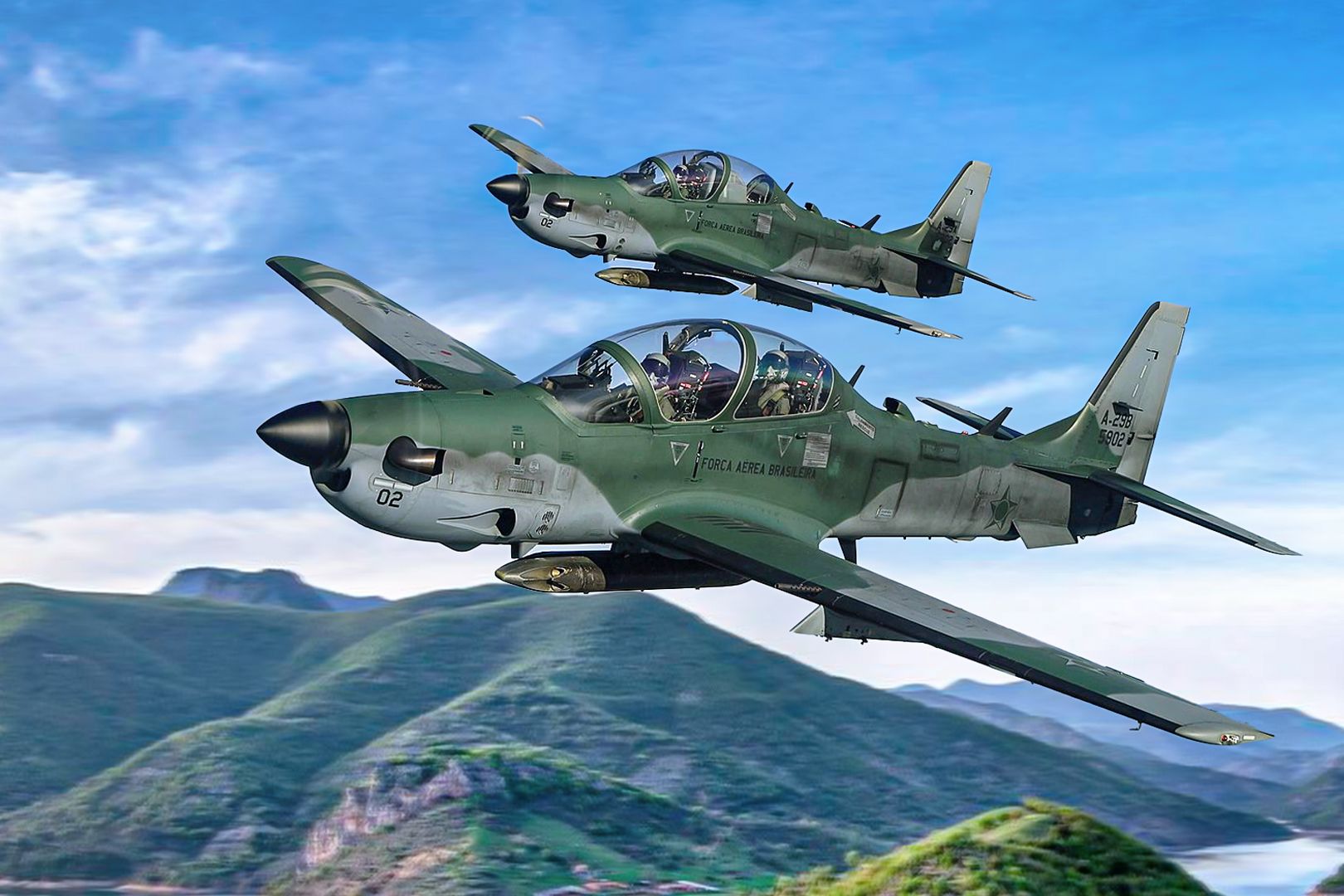Summary A-29 Super Tucano designed for light attack and counter-insurgency, not advanced fighter roles. Super Tucano widely exported, cost-effective at $10M per unit, with 500K flight hours. Features precision munitions, low cost $1,500 per flight hour, and can operate day or night.
Brazil is one of the few countries in Latin America that possesses significant aviation capabilities thanks in large part to the massive aircraft manufacturer Embraer . While Brazil has never produced a true fighter jet, they have built the successful and versatile Embraer EMB 314 Super Tucano (also called the A-29). While it may look like a basic military aircraft, the Super Tucano offers several unique features and was developed out of the earlier Embraer EMB 312 Tucano.

Designed for light attack and counter-insurgency Most Latin American nations have little need for a large, powerful, and modern air force. This is due to a range of factors - perhaps the most significant factor is that the US Air Force to the north is so overwhelmingly powerful, there just doesn't seem to be a point. Almost no countries in Latin or South America possess meaningful numbers of advanced fighter jets.
The Chileans have 36 F-16s, Argentina has no multirole fighter jets ( until second-hand F-16s arrive ), Brazil basically has no advanced fighter jets (although Swedish Gripens are now arriving), Venezula's F-16s and Su-30s are in questionable operational states, Peru has a limited number of aging fighters, and Colombia has around 17 aging Israeli IAI Kfirs (based on the old French Mirage 5). A-29 Super Tucano specs: Crew: 2 Service ceiling: 35,000 feet External payload: 3,420 lbs Endurance with internal fuel: 2.6 hours Endurance with full external fuel: 7.
1 hours Powerplant: 1 × Pratt & Whitney Canada PT6A-25C turboprop engine There is little fear in South America about one country invading another (other than Venezuela and Guyana). This means it is typically considered sufficient to procure light combat aircraft for counter-insurgency operations. Many countries in South America seem to be content with light combat aircraft like the Super Tucano (other light fighters include the Northrop F-5, the IA-63 Pampa, and the AMX International).
Aircraft like the Super Tucano are intended more for a counter-insurgency role (perhaps for conflicts similar to the Colombia FARC insurgency) than peer-on-peer fighting (like the F-16). It is intended to be a low-cost system that operates in low-threat environments. The A-29 Super Tucano can carry a wide range of weapons, including precision-guided munitions.
It is designed to operate in austere conditions, including from unprepared runways and places with little infrastructure. Super Tucanos are well suited to border patrols and for armed reconnaissance missions. Announced at Farnborough Airshow, it will be the first time such a system has been used in commercial aviation.
An export success Embraer's A-29 Super Tucano has been exported around the world and is now operated by some 16 air forces. The Super Tucanos produced for export are built on Embraer's other production line by Sierra Nevada Corporation (SNC) in the United States. The Super Tucanos used by Brazil are built in Brazil.
According to FlightGlobal , Brazil has 62 Super Tucanos and 100 older EMB 312 Tucanos. Countries that have purchased the Super Tucano Afghanistan (before the Taliban take over): Ecuador: Indonesia: Lebanon: Mali: Mauritania: Nigeria: Philippines: USA: Burkina Faso: Brazil: Angola: Chile: Colombia: Dominican Republic: Paraguay: According to Embraer , over 260 Super Tucanos have been ordered so far, and Paraguay became the latest country in July 2024 to announce it would purchase the aircraft, while Portugal is also in discussions to purchase the Super Tucano . Additionally, Super Tucanos may have been purchased by Ghana, Honduras, and Turkmenistan.
Many of the countries that have ordered them (like Burkina Faso, the Philippines, Indonesia, Nigeria, Colombia, and Mali) have ongoing insurgencies. To date, they have accumulated over 500,000 flight hours, of which around 60,000 hours have been on active operations. Afghanistan ordered them to fight the Taliban.
Since the Taliban came to power, it is unclear if any of them are flying. The air force said, "Pilots don't die, they just fly higher." A cost-effective solution Whereas an advanced multirole fighter can cost as much as $100 million to buy (with very high up-keep costs), a base Super Tucano costs around $10 million.
It is also much more affordable to operate than fighter jets and costs around $1,500 per flight hour. "Minimal infrastructure and ground support required. Quick fault identification and ease of correction.
Intensive use of on-condition maintenance concept. MSG-3 based Maintenance Program ensuring High Operational Safety and Minimum Costs. High Availability for Extreme Environmental Conditions" - Embraer The Super Tucano can also operate both day and night and boasts a low acoustic signature.
Although it may look like a basic aircraft, it is still built for combat and survivability. Some of its survivability features include a low thermal signature, low audible signature, and low visual signature to avoid being seen. If it is engaged, it is highly maneuverable and has enhanced situational awareness, a self-protection system, armor, self-sealing tanks, and system redundancy.
Super Tucano by the numbers: Number ordered: over 260 Number of air forces: 16 Cost per unit: approx. $10 million Cost per flight hour: $1,500 Flight hours: 500,000 Combat hours: 60,0000 Brazil is not alone in building trainers and light fighters. To the south, Argentina's Fábrica Argentina de Aviones SA (FAdeA) has built the IA-63 Pampa (with assistance from Germany's Dornier).
The Pampa is an advanced jet trainer with some combat capability..



















